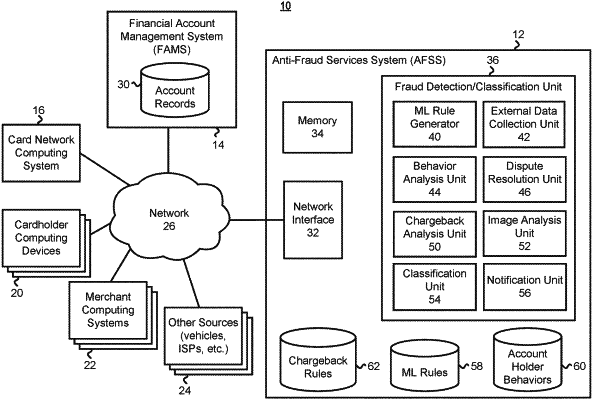| CPC G06Q 30/0185 (2013.01) [G06N 5/046 (2013.01); G06N 20/00 (2019.01); G06Q 20/102 (2013.01); G06Q 20/20 (2013.01); G06Q 20/24 (2013.01); G06Q 20/3224 (2013.01); G06Q 20/34 (2013.01); G06Q 20/401 (2013.01); G06Q 20/4016 (2013.01); G06Q 20/407 (2013.01); G06Q 20/409 (2013.01); G06Q 30/0225 (2013.01); G06V 30/194 (2022.01); G06V 30/41 (2022.01); G06Q 30/0248 (2013.01)] | 18 Claims |

|
1. A computer-implemented method of using a machine-learned model to determine a cause of a false positive fraud alert, the method comprising:
receiving, by one or more processors, transaction data associated with a financial transaction initiated by a customer;
determining, using a rules engine applying one or more fraud detection rules, a fraud alert associated with the financial transaction;
receiving, by the one or more processors and from a customer computing device, customer feedback indicating that the fraud alert is a false positive fraud alert;
in response to receiving the customer feedback, providing the transaction data as input to a machine-learned model trained to output a piece of data within the transaction data that caused the false positive fraud alert;
determining, based on the output of the machine-learned model, a cause associated with the false positive fraud alert; and
modifying, based on the cause, a first fraud detection rule of the rules engine including a threshold associated with the piece of data that caused the false positive fraud alert.
|